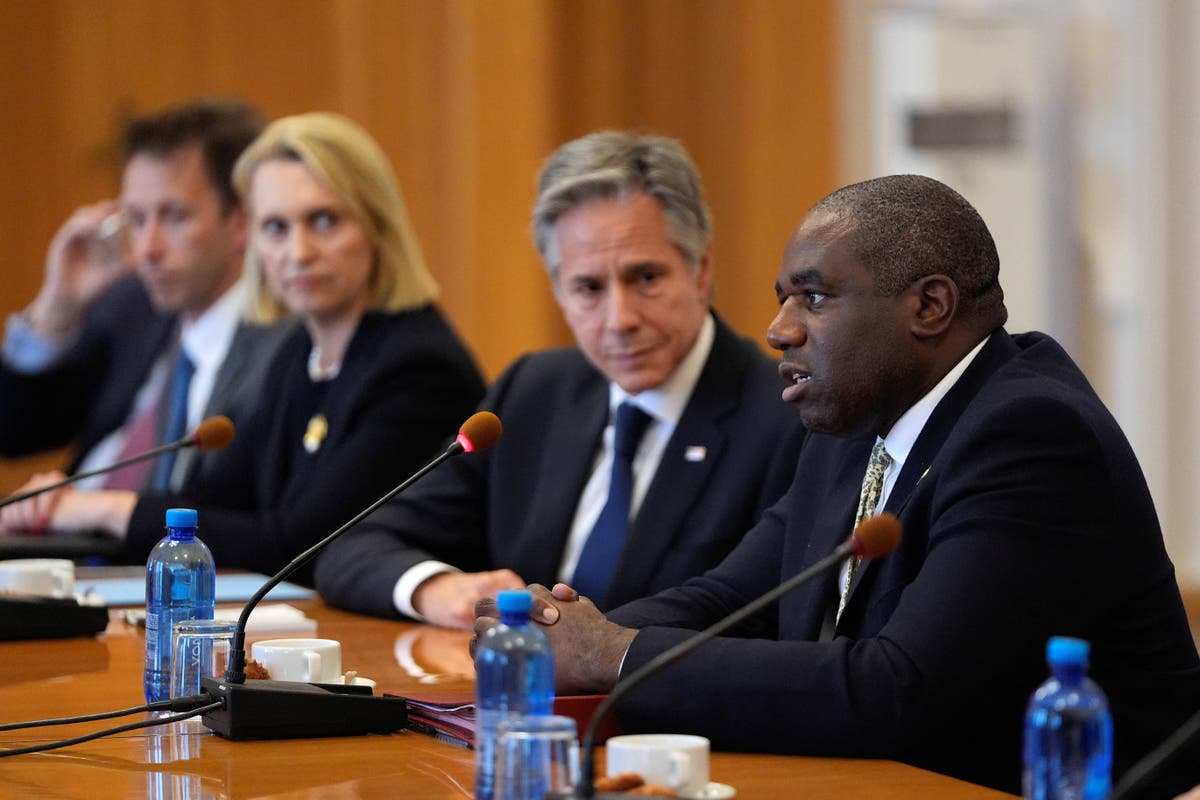The joint visit to Kyiv by the US secretary of state, Antony Blinken, and our own foreign secretary, David Lammy, is much more than that latest show of trans-Atlantic support for Ukraine.
The possible lifting of restrictions on the use of the US and UK’s longer-range missiles is widely being billed as a “game-changing” move, one that would enable strategic targets deeper within Russia to be hit by Ukrainian forces for the first time. Lammy has said that the West is “listening carefully” to Ukraine’s needs.
Certainly for President Zelensky, it comes at a critical moment, as the solidity of the EU’s backing of the war appears to be wavering. With Germany going “wobbly” as its domestically embattled chancellor Scholz calls for a peace conference, and with winter now approaching, the Anglo-American show of support for Ukraine is vitally important.
But potentially of even greater consequence, to an even greater number of people around the world, is whether giving permission to use long-range weapons to strike Russian territory proves to be a tipping point for Putin – one that prompts him to go nuclear.
Ukraine already uses homemade drones to strike Russia’s “rear area” launch sites and airfields, as far away from its borders as an Arctic airfield; it has even successfully hit the Kremlin itself. The latest attack on Moscow this week – its biggest in the war so far – used 140 drones, left one dead and several injured.
Such drones can only carry lightweight warheads, and don’t do significant damage. That could change if Western cruise missiles with bunker-busting warheads were able to be deployed. Ahead of the Blinken/Lammy visit, Putin’s propaganda machine was in overdrive about the West’s “war on Russia”.
But would the US and UK grant permission for Storm Shadow cruise missiles to be fired at Russia if there was a chance that Putin would launch his nuclear weapons in retaliation?
Optimists say the West has crossed so many of Putin’s supposed “red lines” without the Kremlin going nuclear, there is no reason to think he would now. But this intervention by the US and UK is a development that, I would argue, means we should be mindful of the very real possibility.
Right now, target selection for Storm Shadow and other Western missiles is, in practice, controlled by the West and dependent on their intelligence assets. The Ukrainians have had input, of course, but – in much the same way that the UK’s Trident weapons system isn’t really “independent” – final authorisation must come from the West.
So what are Putin’s options? To prevent the transfer of more effective Western weapons into Kyiv’s hands, will Russia strike at Ukraine’s “rear area” – countries such as Poland and Romania, a key conduit for its supplies? Of course, these are Nato allies, and an attack on them could trigger the alliance’s Article 5 and war with Russia.
Putin might shy away from that, opting instead for “deniable” sabotage of Western infrastructure – or promoting Iran and its proxies to attack US and British assets across the Middle East.
When contemplating how a nuclear power might react when cornered, some take comfort in historical precedent and the fact that the United States could lose the war in Vietnam or Afghanistan without resorting to the deadliest weapons in its stockpile. But those wars were on the other side of the world, against enemies who posed no threat to America’s territorial sovereignty.
In addition, when the Red Army was losing in Afghanistan in the 1980s – to Islamist rebels using Western-supplied anti-aircraft missiles just south of Moscow’s Central Asian republics – it wasn’t in the “soft underbelly” of Soviet Muslim republics but in the European states, and especially in Russia itself, that popular unrest led to the USSR’s collapse in 1991. Ukrainian strikes on Russian military targets might not collapse the country itself, but it could certainly prove personally apocalyptic for Putin.
Westerners like to imagine the Russian president going in handcuffs to the Hague, like Serbia’s Milosevic in 2001. But the real threat to Putin’s personal and political survival comes from hardline nationalists, who see him as too soft and reluctant to use Russia’s nuclear and other strategic assets.
That may be a mad diagnosis, but it is surprisingly widely disseminated on the internet inside Russia – especially by militarist Telegram channels and among security types. The fall of Putin wouldn’t necessarily calm the situation.
At the weekend, CIA director Bill Burns warned that Putin had considered his nuclear options when the war was going badly before. If, as winter closes in, Ukraine regains an ability to threaten him with defeat with Western upgrades, Putin could decide to cross his own red lines – and that would be disastrous for us all.
Even a token nuclear strike would take us into a new world disorder.
Mark Almond is a British author and former lecturer in Modern History at Oriel College, Oxford

